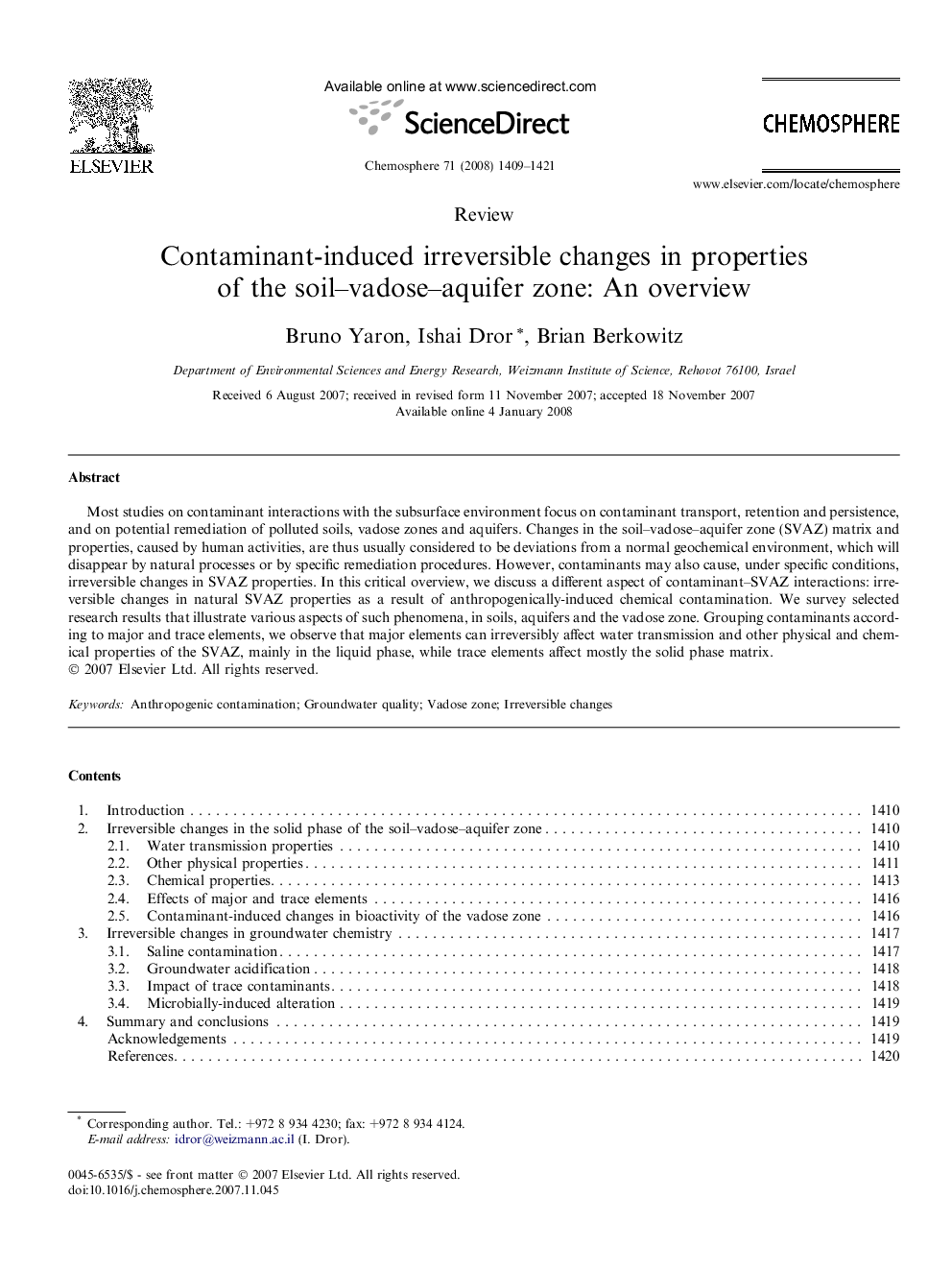| Article ID | Journal | Published Year | Pages | File Type |
|---|---|---|---|---|
| 4414489 | Chemosphere | 2008 | 13 Pages |
Most studies on contaminant interactions with the subsurface environment focus on contaminant transport, retention and persistence, and on potential remediation of polluted soils, vadose zones and aquifers. Changes in the soil–vadose–aquifer zone (SVAZ) matrix and properties, caused by human activities, are thus usually considered to be deviations from a normal geochemical environment, which will disappear by natural processes or by specific remediation procedures. However, contaminants may also cause, under specific conditions, irreversible changes in SVAZ properties. In this critical overview, we discuss a different aspect of contaminant–SVAZ interactions: irreversible changes in natural SVAZ properties as a result of anthropogenically-induced chemical contamination. We survey selected research results that illustrate various aspects of such phenomena, in soils, aquifers and the vadose zone. Grouping contaminants according to major and trace elements, we observe that major elements can irreversibly affect water transmission and other physical and chemical properties of the SVAZ, mainly in the liquid phase, while trace elements affect mostly the solid phase matrix.
